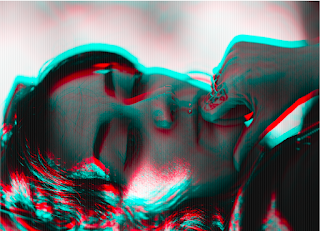Topaz labs
When visiting the awesome photography show at the NEC in Birmingham I left leaving one thing (other than a Hasselblad) which was Topaz labs...usually skeptical of overly polished sales demos this one had me hook line and sinker so I decided to purchase it a few days after.
The complete bundle boast many creative and artistic features but I was particularly blown away by 'DeNoise 6' and 'ReMask 5'. Both claimed to improve quality and save time in doing the job, and both work seamlessly with Photoshop and Lightroom.
I decided to create a blog to show both features in action using my own images.
Firstly I deliberately took a shot at ISO3200, pushing the limits of what my 5D markII can cope with.
The image was very noisy as you can see from the 1st example and the zoomed image taken from DeNoise 6.
DeNoise 6 differs from other noise removal plug-ins because rather than delete pixels it intelligently colours them back in meaning the quality of the image improves. Rather than compromising sharpness for the removal of pixels.
The image above shows ReMask 5 in the tri-map selection mode. It is so simple and quick to use, especially when used with a graphics tablet. Red indicates the area you want to get rid of, green is the area you want to keep and blue is the area you want Topaz Labs to calculate. You don't have to be super accurate with the selection to get a good result although the less the software has to think about, the less chance it has to make a mistake. It also has a handy feature that allows you to see different view modes side by side (see below).
The complete bundle boast many creative and artistic features but I was particularly blown away by 'DeNoise 6' and 'ReMask 5'. Both claimed to improve quality and save time in doing the job, and both work seamlessly with Photoshop and Lightroom.
I decided to create a blog to show both features in action using my own images.
Firstly I deliberately took a shot at ISO3200, pushing the limits of what my 5D markII can cope with.
The image was very noisy as you can see from the 1st example and the zoomed image taken from DeNoise 6.
 |
| Sky shot at ISO3200. |
 |
| Sky shot at ISO3200 (zoomed in via Topaz Labs DeNoise 6) |
I was amazed by the quality of the image after a quick tweak of the 'Overall Strength' slider (see below). The cloud itself has faded a little but I could have brought it back slightly in Photoshop.
My next task was to see how quickly I could make a (fairly) detailed selection using ReMask 5 so I took a picture of my Fiancé against a pretty tricky background, making sure there were some gaps in her hair to really put the software to the test.
 |
| Portrait photograph in Topaz Labs ReMask 5, showing the tri-map mask selection |
 |
| Keep view mode side by side with the mask view mode |
Viewing the different modes side by side allows you to re assess tricky areas such as the gaps in the hair before you create the final mask for Photoshop.
The software also has impressive features for selecting things behind translucent objects and also a colour range feature for making images with even greater detail but I have not included examples in this blog. Below is my 2 original images edited in Topaz Labs and layered in Photoshop.
For the final image I actually deleted pixels from my portrait rather than masking them, to keep the workflow non destructive I have since altered the settings in Topaz Labs to create a mask rather than delete pixels. To make the image more believable I then added a cool blue colour adjustment to the portrait layer.
Final images combined
The point to this blog was to show how good Topaz labs software is and a how much of time save to my workflow it can't be. You could spend a half hour to an hour tweaking masks in Photoshop and still not be completely happy with it. This complete image including the DeNoise process took roughly 20 minutes and required no real thought. With a more detailed attempt I have no doubt the quality of the final image could be greatly improved but I am happy with how it turned out.






Comments
Post a Comment